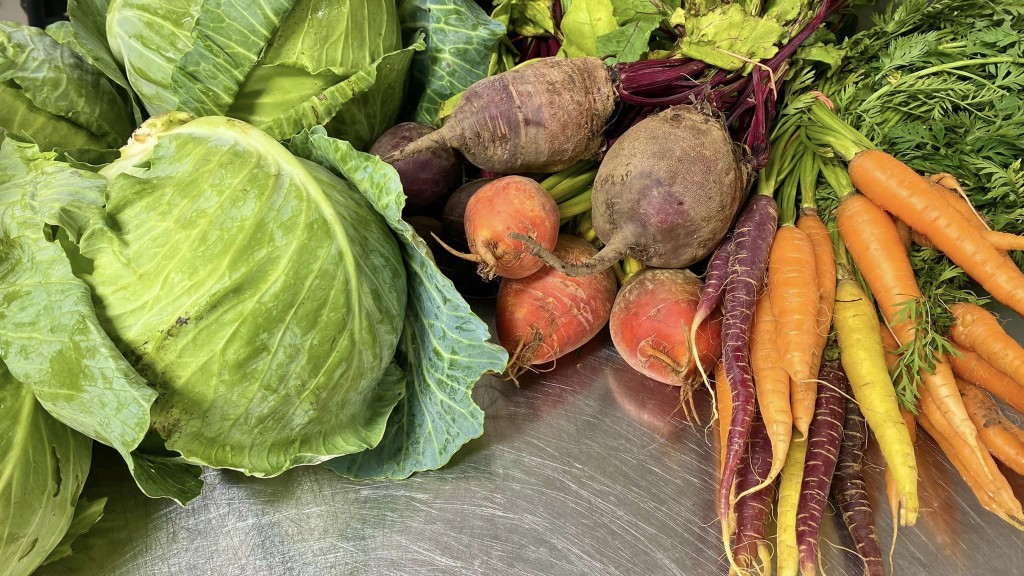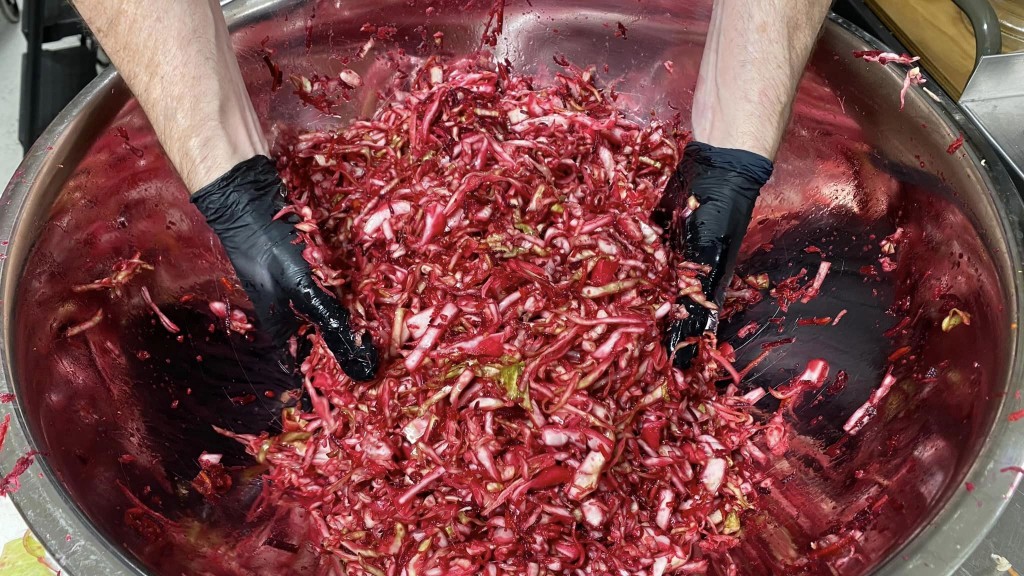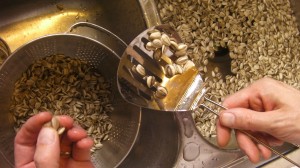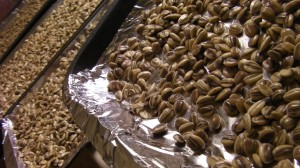
FERMENTING VEGGIES: This small haul from the Murfreesboro Saturday Market got made into some tasty sauerkrauts we hope will be ready late next month. These are recipes with ginger that we make at home for ourselves and decided to add to the krauts we currently offer at Wellness Emporium – Woodbury. One is Ginger Beet. The other is Carrot, Ginger, and Turmeric.
HOW TO MAKE SAUERKRAUT: Sauerkrauts are easy to make and so good for you. They are rich in dietary fiber, nutrients, andgut-healthy probiotics.
All you need to do is chop up a blend of 75% cabbage with 25% other veggies and 2% salt added. Weigh all your cabbage and mulitply the weight time 0.33. The resulting number is your 25% of other veggies. After chopping or shredding your ingredients, mix them together and weigh it. Multiply the total weight with 0.02. This is how much salt you need to add, which is 2% of the total weight.

Mix all these together kneading the veggies in a bowl. You should see brine dripping from each fist full. Let it sit for about 20 minutes, then place in a fermentation vessel for about three weeks making sure all the veggies are completely submerged in its own brine. You can use fermentation weights to hold your fermenting veggies below the brine surface, or fill ziplock bags with water and place on top.
Fermentation will go through a couple of phases. If you use an airlock or airtight lid, you will need to burp the ferments. This will take about 3 weeks. When it’s done, jar it up and refrigerate to slow or stop fermentation. It should be a crunchy, tangy, probiotic bite of fermented goodness you can add to most meals!



